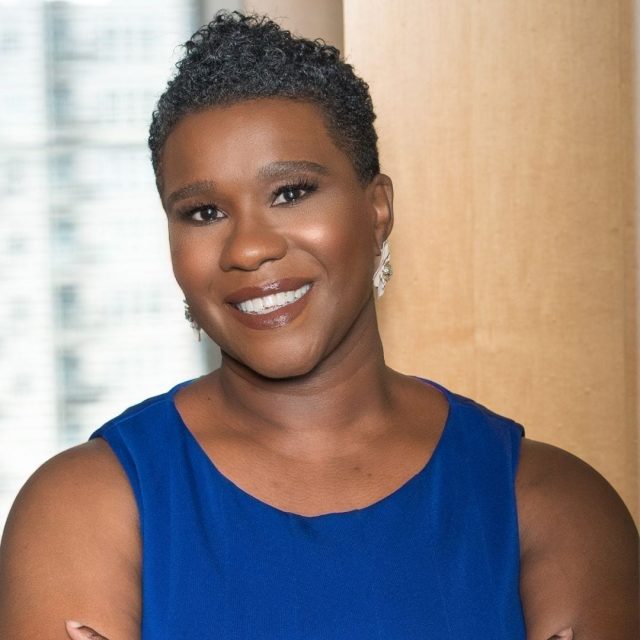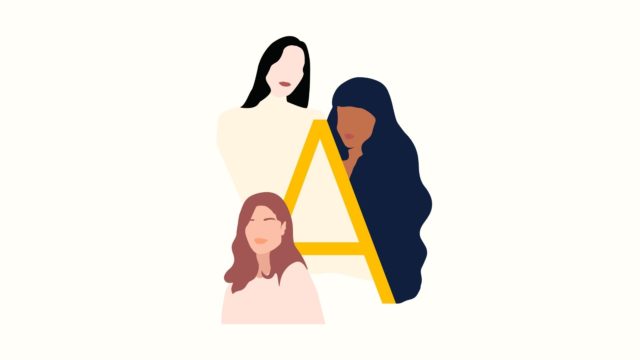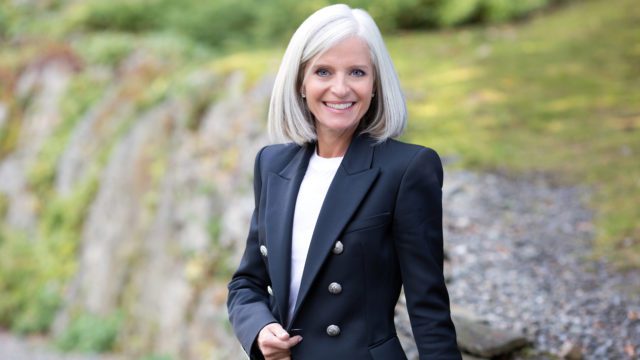Equality between women and men: 4 potential solutions for outsmarting the passage of time

The situation of women is worrisome. While they’ve been juggling with an exhausting overload for a year now, women have been watching the ball of their ambition deflate. A survey conducted on 600 women of The A Effect’s expansive community reveals that one respondent out of two is reconsidering her professional aspirations. Six out of 10 women describe their ambition negatively and 41% of them say that they’re less ambitious than they were this time last year. Due to the pandemic, women’s participation in the active population has reverted to its lowest level in three decades.
In 2019, the World Economic Forum announced that equality between the sexes would become a reality some time around 2234. That’s in 213 years. And that was even before COVID blew relentlessly on the female flame of ambition, leaving it flickering precariously. While it’s still difficult to measure the pandemic’s impact on equality between men and women, let’s look at the facts: at the very least, we would need to live two more centuries of inequity, of injustice—a waste of talents for the world. We must do more to prevent the widening gap of inequalities, to prioritize finding and putting into place a variety of solutions. To fuel the idea machine, we propose four potential solutions for outsmarting the march of time and for reaching equality between women and men much sooner.
1. Count dollars earned, but more importantly, the number of women
ROI : return on investment, is the classic indicator to measure the financial viability of invested capital. But, women’s presence in organizations is proven to be an excellent investment; many studies show its impact on the increase in stock prices, the decrease in risk, among others. The management consulting firm McKinsey & Company revealed in their study Diversity Matters that companies that are more diverse are 15% more inclined to generate a higher revenue when compared to the median of their industry.
The economic argument demonstrating the contribution of women has been trending for many years. Undeniably, the position of women in companies and institutions has a major economic and social impact. But to better notice more women rising to decision-making positions and positions of influence, it’s imperative that we measure their progress by clear benchmarks. We must follow and encourage this progress with binding measures like quotas.
2. Technology: an ombudsman to gender balance
Like 2.5 million people, you may have taken the Implicit Association Test. Psychologists at Harvard University developed this test to measure and concretize the sprawling presence of unconscious prejudices in our lives. These mental shortcuts cloud our judgment, leading us to discriminate unconsciously against women, among others. The results reveal that 76% of respondents have a stronger propensity to associate the word “career” with men, and the word “family” with women.
This also proves that data and technology can shed new light on our blind spots. It’s now possible to transfer an intuitive idea of human resource management to an approach based on data analysis. Numerous tools are at our disposal to measure and understand the different treatment allocated to women.
Technologies such as these can help organizations to correct certain biases, especially concerning the hiring and promotion of women. Silicon Valley companies propose tools to anonymise candidates’ resumes, masking their gender and other information that would lead to automatic judging on the part of the recruiter. There is also a tool that neutralizes the voice of candidates during telephone interviews. GenderTimer, an application recently abandoned due to lack of resources, calculates women’s speaking time and the number of times they’re interrupted during meetings. There’s also Glassdoor, the platform that divulges a company’s salaries, making salary negotiation more transparent and open: a terrain known to be chaotic for women. We can, therefore, imagine a professional world where apps that keep an eye on these biases will diminish human reflexes and certain behaviours.
The speed and rate of artificial intelligence developments let us foresee that over the course of the next few years, we will be able to implement diagnostics and propose solutions that will impact the promotion and hiring of women, therefore accelerating their ascension to decision-making positions.
3. More women leaders. In drawings, in photography, in real life, in offices.
Have you ever walked into a room and gotten the vague impression that you weren’t “in your element”? Images, statues, busts, and other gendered representations have a greater impact on women than you would think. Sapna Cheryan of the University of Washington tested this idea by removing the Star Wars and Star Trek posters that hung on the walls of her laboratory and replacing them with neutral images, like a landscape. This seemingly small, banal gesture reinforced the association between a career in computer science and women for the female students present.
Another study cited in the book What Works called on subliminal messages. Before their turn to speak, participants who had to deliver a public speech were subtly exposed to portraits of women (like Angela Merkel or Hillary Clinton) or men (like Bill Clinton), or no image at all. The women who were exposed to portraits of politicians spoke for longer and their speeches were deemed superior to those of other women. Seeing is believing in oneself and one’s abilities. And self-confidence is, among other things, closely connected to the presence of role models.
We must rethink our spaces, our places of remembrance, the way in which we promote our heroes and heroines because walls do talk. Some big companies have begun to remove the iconography of the founding fathers to offer new role models to women. Also, a few years ago, GettyImage in partnership with Lean In, an organization founded by Sheryl Sandberg, launched a bank of 2,500 photos of women and young girls practicing strong leadership in a contemporary work environment.
To remove the invisibility cloak that women wear in our organizations, we need the courage to propose other representations of them; less stereotypical, more accessible, real, and inspiring. Now and for centuries to come. A(wo)men!
4. Men as active participants, not just allies
It’s always surprising to observe the extent to which the subject of equality between women and men is seen as a typically feminine battleground, as though men can’t attack an injustice suffered by anyone other than themselves. Women, however, take extreme care of their men (in school, hospital, prison and social milieus, and the list goes on).
Why do we have so much difficulty attaining gender equality? The consulting firm Deloitte, in its report The design of everyday men, blazes a bold trail: men feel constrained to constantly attain status in the workplace. In other words, enormous and well-established cultural and organizational expectations in the reality of men are at the origin of this tireless quest for success in the professional world, leaving men little room to share certain non-work responsibilities with their life partners. This utmost-priority status attached to work even denies women the conditions that would allow them to advance more easily in their profession.
Luckily, for the last few years, we have noticed the rise of a more self-aware leadership, one that is more introspective and inclusive, where we find flexibility and a cooperative approach for problem-solving. More than ever before, this leadership is resounding through our organizations. In the future, this transformation of the definition of leadership could strongly influence what it means “to behave like a man, like a woman.” Maybe men, unburdened by the expectations and diktats of professional culture put in place, and more self-aware of his key role in the rise of women could truly be an active participants in the fight for equality between women and men. It’s by approaching the stakes linked to equality head-on that we will open the floodgates of a fight that leads to the end of all other forms of inequality. This battle is the final hurdle of a widespread movement, and its cross-sectional scope will make us pass the test of what it truly means to “live together.”
Follow us on Facebook, Twitter, LinkedIn, et Instagram. You can also subscribe to our newsletter.







